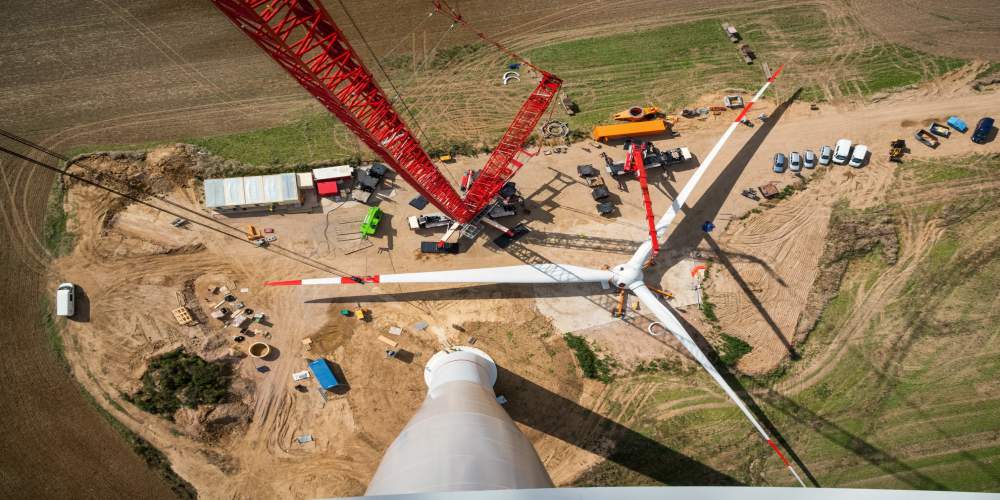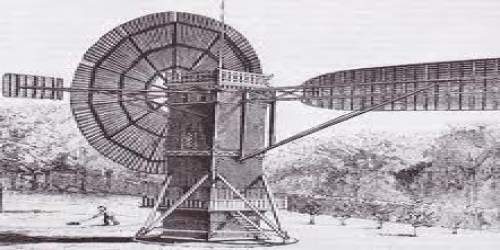Read Time : 3 Minutes
Is my site suitable for a wind turbine?
Will my property be suitable for a wind turbine?
Above all others, this is the key question to bear in mind when looking into wind turbines. The suitability of the site dictates the financial gain to be made from the wind turbine installation. A location suitable for the installation of wind turbines will have the following attributes:
- An average wind speed of at least 5m/s
- Free from turbulence caused by nearby obstacles such as hills, buildings and trees, which slow the wind down
- In the case of pole-mounted turbines, enough land on which to build foundations and attach guy ropes (if necessary)
- The site must not be in or near to a Conservation Area or anywhere in the grounds of a Listed Building
Urban and suburban sites are therefore highly unlikely to be suitable for the generation of energy with wind turbines, and are better suited to other renewable energy technologies, such as solar photovoltaic, solar thermal and ground source heat pumps.
Wind turbines are best suited to elevated and open sites in rural and coastal areas. It is for this reason that one finds many domestic and industrial wind turbine installations in Scotland, Ireland and Cornwall.
Wind speed
Assessing your local wind speed is the first step to take when making a decision on purchasing wind turbines. In the first instance, you can use the Energy Saving Trust’s (EST) wind speed prediction tool, which will give you a rough estimate of your area’s wind speeds: Wind Speed prediction tool
If the result of this preliminary test is that your area’s wind speed is greater than 5m/s, the next step would be to monitor the wind speeds that your property receives over a set period of time. At least 3 months’ monitoring is vital, although it is recommended that you monitor for 12 months in order to account for seasonal variations in wind speeds.
The best way to carry out this monitoring is to buy an anemometer (typically costing between £100-£750) and place it at the same height as that of the proposed turbine. The anemometer will measure average and maximum wind speeds, as well as levels of turbulence at your property, and log the data which can then be accessed by a computer interface. Some anemometers also measure wind direction, although this can be done with a separate weathervane.
Once you have monitored wind speeds for your area, it is also advisable to cross-reference the data with other information sources, such as the Met Office.
Another useful resource is the DECC UK Wind speed Database.
If the results of the wind speed monitoring are encouraging, you can then arrange for an MCS-accredited engineer or technical surveyor to inspect your property and assess the feasibility of a wind turbine installation.
Planning permission: pole-mounted wind turbine
Obtaining planning permission for a domestic pole-mounted wind turbine in the UK can be a complex process that requires careful consideration and adherence to local regulations. The installation of a wind turbine on residential properties offers significant benefits, including reduced energy bills, lower carbon footprint, and potential income through the Feed-in Tariff or Smart Export Guarantee schemes. However, the journey to gaining approval for such a project involves several key steps and considerations.
First and foremost, homeowners must assess their property's suitability for a wind turbine installation. Factors such as wind speed, location, proximity to neighboring properties, and visual impact must be carefully evaluated. Conducting a thorough feasibility study or enlisting the expertise of renewable energy consultants can provide valuable insights into the project's viability.
Next, it is crucial to familiarize oneself with local planning guidelines and regulations. The UK's planning system is strict about the visual and environmental impact of structures, and wind turbines are no exception. The turbine's height, design, and location must adhere to specific criteria outlined by the local planning authority.
To initiate the planning permission process, homeowners will need to submit a comprehensive application, including detailed plans, environmental impact assessments, and any necessary reports or surveys. The application will also involve informing and consulting with the local community and relevant stakeholders to address concerns and gain support.
In some cases, planning permission may be denied due to potential adverse effects on the landscape, wildlife, or nearby properties. However, applicants have the right to appeal such decisions if they believe their proposal meets all necessary criteria and can demonstrate its positive impact on sustainable energy generation.
While the process can be challenging, the UK government is increasingly supportive of renewable energy initiatives. Local authorities are becoming more open to green energy projects, which can bolster the chances of approval for domestic wind turbines.
The path to gaining planning permission for a domestic pole-mounted wind turbine in the UK involves thorough research, compliance with regulations, and effective community engagement. With a carefully prepared application and a strong commitment to sustainable energy, homeowners can increase their chances of obtaining approval for this eco-friendly and energy-efficient addition to their property.
Planning permission: roof-mounted wind turbine
In the United Kingdom, installing a roof-mounted wind turbine requires careful consideration and adherence to planning regulations. Wind turbines are considered renewable energy solutions that can contribute to reducing carbon emissions and promoting sustainability. However, due to their potential impact on the visual landscape and nearby properties, local planning authorities closely scrutinize applications for such installations.
Before proceeding with the installation of a roof-mounted wind turbine, individuals or businesses must obtain planning permission from their local council. The application process typically involves submitting detailed plans and documentation, outlining the proposed location, size, and design of the turbine. Additionally, any potential impacts on the environment, surrounding properties, and local wildlife must be addressed.
During the planning permission process, public consultations may be held to gather opinions and feedback from local residents and other stakeholders. This ensures that the interests and concerns of the community are taken into account before a decision is made.
It is essential to engage with a professional consultant or architect experienced in renewable energy installations to navigate the planning process effectively. By following the guidelines and demonstrating a commitment to minimizing adverse effects, applicants stand a better chance of obtaining planning permission for their roof-mounted wind turbine in the UK. With proper planning and approval, individuals can contribute to a greener future while enjoying the benefits of renewable energy generation.
Find a local installer
Welcome to the biggest directory of UK renewable energy companies





 How a Wind Turbine works
How a Wind Turbine works







